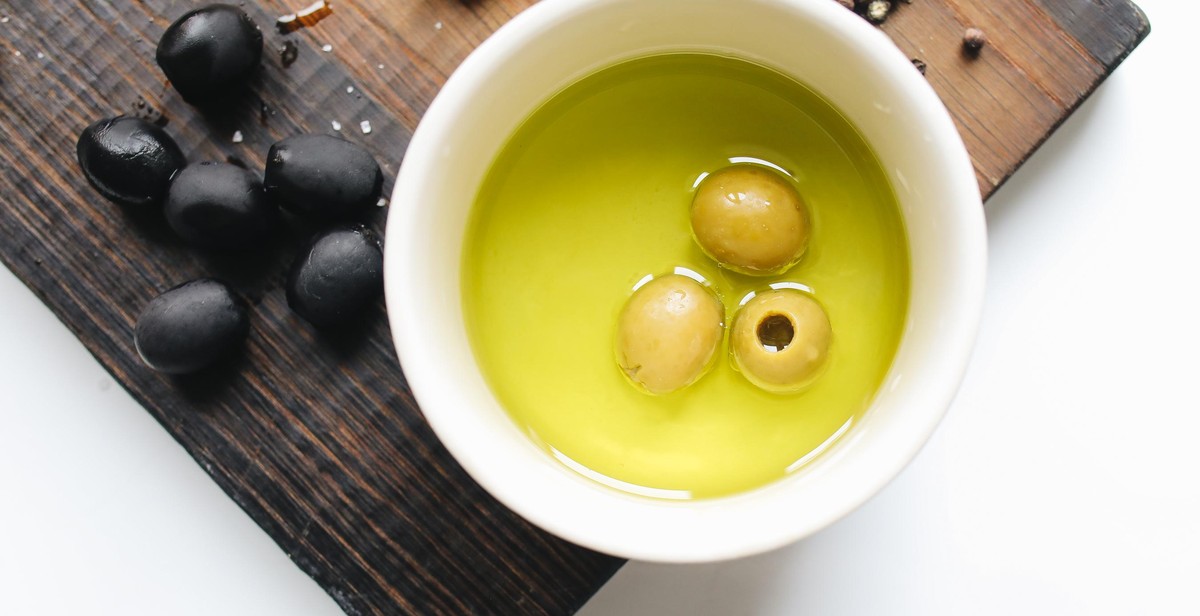Introduction
Margherita pizza is a classic Italian dish that has been enjoyed for centuries. This pizza is a simple yet delicious combination of tomato sauce, mozzarella cheese, and fresh basil leaves. While the traditional recipe is simple, there are many different toppings that can be added to create a unique and flavorful pizza.
Choosing the right toppings for a Margherita pizza is an art, and it requires careful consideration of flavors, textures, and colors. In this article, we will explore the different types of toppings that can be added to a Margherita pizza, and how to choose the right ones to create a delicious and satisfying meal.
Celebrating Classic Flavors
One of the reasons why Margherita pizza is so beloved is because of its classic and timeless flavors. The combination of tangy tomato sauce, creamy mozzarella cheese, and fragrant basil leaves creates a perfect balance of flavors that is both satisfying and delicious. When choosing toppings for a Margherita pizza, it is important to keep these classic flavors in mind and choose ingredients that complement them.
Whether you are a pizza lover or just looking for a delicious meal, this article will provide you with the knowledge and inspiration you need to choose the right toppings for a Margherita pizza. So let’s get started and explore the wonderful world of pizza toppings!

The Origin of Margherita Pizza
Margherita pizza is a classic Italian dish that has become a beloved favorite around the world. The pizza is named after Queen Margherita of Savoy, who was the queen consort of Italy in the late 1800s. The story goes that during a visit to Naples, the queen grew tired of the fancy French cuisine she was being served and requested a simple dish that the locals enjoyed. The local pizza maker, Raffaele Esposito, created a pizza with simple ingredients that represented the colors of the Italian flag: red tomatoes, white mozzarella cheese, and green basil.
This simple but delicious pizza quickly became popular in Naples and eventually spread throughout Italy. It wasn’t until the mid-1900s that margherita pizza started to gain popularity outside of Italy, thanks in part to the rise of Italian immigrants in the United States.
Today, margherita pizza is a staple on the menu of many pizzerias around the world. While the original recipe has remained relatively unchanged, some variations have emerged over time. Some pizzerias add garlic or onion to the sauce, while others use different types of cheese or toppings like prosciutto or arugula. However, the classic margherita pizza remains a fan-favorite due to its simple yet delicious combination of flavors.

Why Stick to Classic Toppings?
When it comes to pizza toppings, there are countless options to choose from. However, there is something to be said for sticking to classic toppings, especially when it comes to Margherita pizza.
Authenticity
The Margherita pizza was first created in Naples, Italy in 1889. It was named after Queen Margherita of Savoy, who loved the pizza so much that it became a staple in Italian cuisine. The original Margherita pizza only had three toppings: tomato sauce, mozzarella cheese, and basil leaves. By sticking to these classic toppings, you can ensure that you are enjoying an authentic Italian dish.
Flavor Profile
The classic toppings of Margherita pizza work together to create a perfect balance of flavors. The sweetness of the tomato sauce pairs perfectly with the creaminess of the mozzarella cheese, while the fresh basil adds a pop of herbaceousness. By adding additional toppings, you risk overpowering or muddling these flavors.
Health Benefits
While pizza is not typically thought of as a healthy food, sticking to classic toppings can make it a more nutritious option. Tomatoes are rich in vitamins and antioxidants, while basil has anti-inflammatory properties. Mozzarella cheese is also a good source of protein and calcium.
Overall, sticking to classic toppings when enjoying a Margherita pizza is a great way to celebrate the history and authenticity of this beloved dish. It also allows you to enjoy a well-balanced and potentially healthier meal.

Tomatoes and Cheese
Tomatoes and cheese are the two main ingredients of a Margherita pizza, and choosing the right ones can make all the difference in the taste and quality of your pizza.
Choosing the Right Tomatoes
The best tomatoes for a Margherita pizza are San Marzano tomatoes, which are grown in the volcanic soil of Mount Vesuvius in Italy. These tomatoes are known for their sweet and tangy flavor, low acidity, and firm texture, which makes them perfect for pizza sauce.
When choosing San Marzano tomatoes, look for canned tomatoes that are certified by the Consorzio San Marzano, which ensures that they are authentic and grown according to strict standards. You can also use fresh San Marzano tomatoes if they are in season, but make sure to remove the seeds and skin before using them in your pizza sauce.
Mozzarella vs. Buffalo Mozzarella
Mozzarella cheese is the most common cheese used on Margherita pizzas, but there is also a premium version of this cheese called buffalo mozzarella, which is made from the milk of water buffaloes.
Buffalo mozzarella has a richer and creamier flavor than regular mozzarella, and it also has a softer texture and higher moisture content. However, it is also more expensive than regular mozzarella, and it may not be available at all pizza shops or grocery stores.
Ultimately, the choice between mozzarella and buffalo mozzarella comes down to personal preference and budget. If you want a classic Margherita pizza, stick with regular mozzarella, but if you want to splurge on a premium version, go for buffalo mozzarella.
| Characteristic | Mozzarella | Buffalo Mozzarella |
|---|---|---|
| Flavor | Mild | Rich and creamy |
| Texture | Firm | Soft |
| Moisture Content | Low | High |
| Price | Affordable | Expensive |

Basil
is a key ingredient in Margherita pizza, adding a fresh and aromatic flavor to the dish. There are two types of basil to consider: fresh and dried. While fresh basil is the preferred choice for most pizza lovers, dried basil can also work well if used in the right way.
Fresh vs. Dried Basil
Fresh basil is always the best option for Margherita pizza as it provides a stronger flavor and aroma. It also adds a pop of color to the pizza that is pleasing to the eye. Dried basil, on the other hand, is a suitable substitute if fresh basil is not available. However, it is important to note that dried basil loses some of its flavor during the drying process. Thus, it is best to use a larger quantity of dried basil to achieve the same flavor as fresh basil.
How Much Basil to Use
When it comes to the amount of basil to use in a Margherita pizza, it is a matter of personal preference. However, a good rule of thumb is to use about 10-12 fresh basil leaves or 1-2 teaspoons of dried basil per pizza. Be sure to sprinkle the basil on top of the pizza after it has been baked to prevent it from burning in the oven.
| Type of Basil | Quantity per Pizza |
|---|---|
| Fresh Basil | 10-12 leaves |
| Dried Basil | 1-2 teaspoons |

Extra-Virgin Olive Oil: The Key Ingredient for Margherita Pizza
When it comes to making a Margherita pizza, the quality of the ingredients is what sets it apart from other pizzas. One of the key ingredients that makes Margherita pizza so special is extra-virgin olive oil. But not all olive oils are created equal. Here’s what to look for in a good quality olive oil:
What to Look for in Olive Oil
- Extra-virgin: Look for olive oil that is labeled “extra-virgin.” This means it is made from pure, cold-pressed olives and has not been chemically treated or refined.
- Color: The color of the oil can indicate its flavor. A greenish-yellow color indicates a fresher, more flavorful oil. Avoid oils that are pale yellow or clear.
- Origin: Look for olive oil that is sourced from Italy, Greece, or Spain. These countries are known for producing high-quality olive oil.
- Harvest date: Look for olive oil that has a harvest date on the label. Fresh oil has a stronger flavor and aroma.
How to Use Olive Oil on Pizza
Once you have chosen a high-quality extra-virgin olive oil, it’s time to use it on your Margherita pizza. Here are some tips:
- Brush the crust: Use a pastry brush to spread a thin layer of olive oil over the pizza crust before adding the toppings.
- Drizzle on top: After the pizza is cooked, drizzle a little more olive oil over the top for added flavor and shine.
- Dip it: Serve extra olive oil on the side for dipping the crust.
| Benefits of Olive Oil |
|---|
| Aside from its delicious flavor, olive oil has many health benefits. It is high in monounsaturated fats, which can help reduce the risk of heart disease. Olive oil also contains antioxidants that can help protect against cancer and other diseases. So, not only does it make your pizza taste great, it’s good for you too! |

Conclusion
In conclusion, choosing the right toppings for a Margherita pizza is all about celebrating classic flavors. With its simple yet delicious combination of tomato sauce, mozzarella cheese, and fresh basil, the Margherita pizza is a timeless classic that can be enjoyed by anyone.
When selecting toppings for your Margherita pizza, it’s important to keep in mind that less is often more. Adding too many toppings can overpower the delicate flavor of the pizza, so it’s best to stick with a few high-quality ingredients.
Some great toppings to consider include prosciutto, arugula, mushrooms, and olives. These toppings add a delicious twist to the classic Margherita pizza while still maintaining the integrity of the original recipe.
When it comes to making the perfect Margherita pizza, it’s important to use high-quality ingredients and take your time to ensure that each component is cooked to perfection. With the right toppings and a little bit of patience, you can create a Margherita pizza that is truly unforgettable.
So, the next time you’re in the mood for pizza, consider making a classic Margherita pizza with your own unique twist. Your taste buds will thank you!
